1lumen selects and reviews products personally. We may earn affiliate commissions through our links, which help support our testing.
Brinyte HL16 review
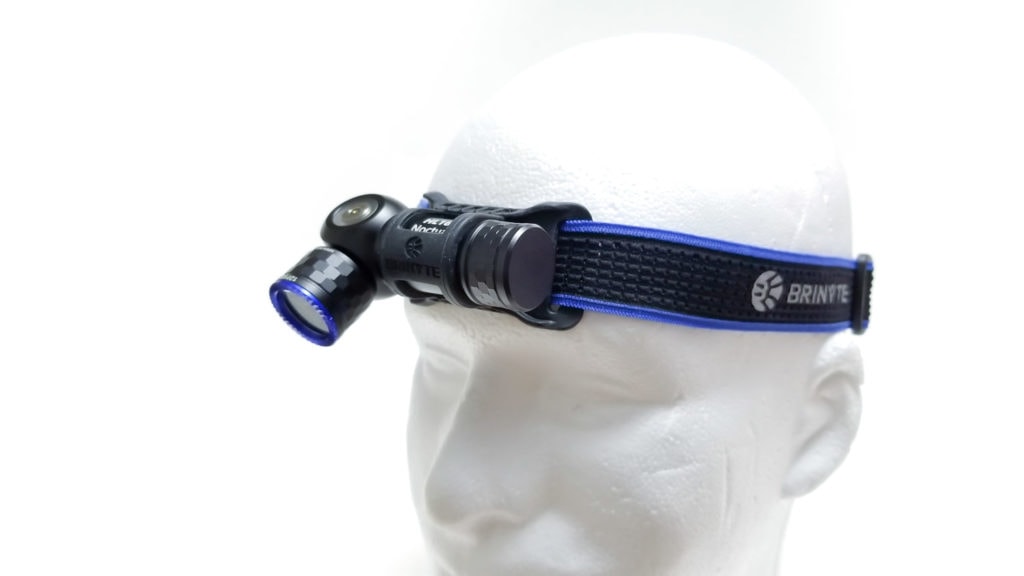
Brinyte HL16 Noctua specifications
| Brand/model | Brinyte HL16 Noctua |
|---|---|
| Category | Best headlamps |
| LED | CREE? |
| Lumens | 520 lm |
| Beam intensity | 5,000 cd |
| Battery config. | 1*16340 / CR123A |
| Material | Aluminum |
| Modes | 4 |
| Blinkies | Strobe |
| Reflector | TIR |
| Waterproof | IP66 |
| Review date | October 2021 |
Introduction:
I was first introduced to Brinyte in 2019 after reading some reviews about the PT series tactical flashlights. However, before that, I had never heard of them, but it turns out Brinyte has been in the business a while, making lights since 2006. Interesting tidbit, Brinyte doesn’t rely on OEMs for production; it’s all in-house, which is great for quality control. Geared primarily towards professional users (law enforcement, first responders, military, etc.), and sporting cool names like Oathkeeper, Rescue Angel, and Artemis with interesting design features. I like that, so when I got the chance to review something new from Brinyte, of course sign me up!
New for 2021, the HL16 Noctua is an adjustable-head EDC flashlight, but like the FireFlies PL47G2, it can do double-duty as a headlamp. The clever naming convention continues here because Noctua in Greek mythology is the symbol of the Greek goddess Athene (Clash of the Titans flashbacks, incoming!), and symbolic of wisdom, innovation, and cunning. The HL16 had a bit of a rough start, first introduced as the HL12 which had an odd system of socketed mounts onto which you could affix a light engine for different head angles. It didn’t make it past the prototype stage, but Brinyte did send the updated and heavily revised pre-production prototype, denoted by the “sample, not for sale” text on the head. Let’s see how it performs.
Package quality.
The HL16 came in a very premium-looking package, like something you get from Imalent or Olight. It’s also what I consider commensurate for what this light costs. The box is sturdy with bright graphics, feature blurbs, a QR code, and specs. Under the lift-off lid (after removing the retaining band), inside, the light was sitting on a tray with the accessories underneath. There wasn’t any padding, but nothing was damaged. Here’s what you get:
- Brinyte HL16 Noctua
- Brinyte-branded 16340 li-ion cell (in the light)
- Pocket clip (attached)
- Proprietary USB A magnetic charging cable
- Headband
- User manual
- 2 spare o-rings
- Warranty card
- Battery insulator warning card
You get everything needed to get going including the battery, which is awesome since you don’t need to buy anything. I can’t find anything out of place with the accessories. Everything seems good quality so no complaints. The battery was preinstalled with a plastic isolator to keep it from dumping during storage. The battery read 3.7 volts.
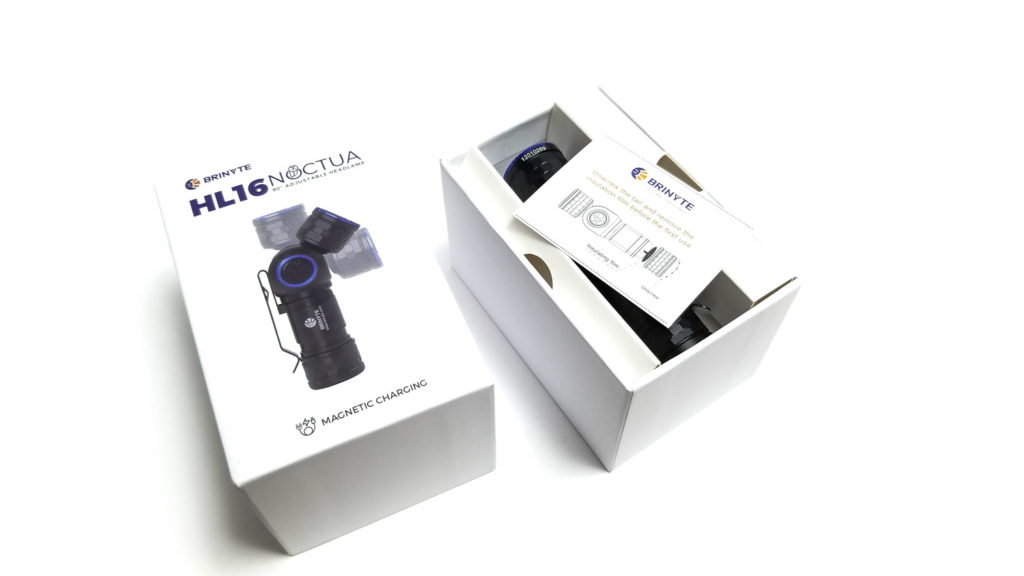
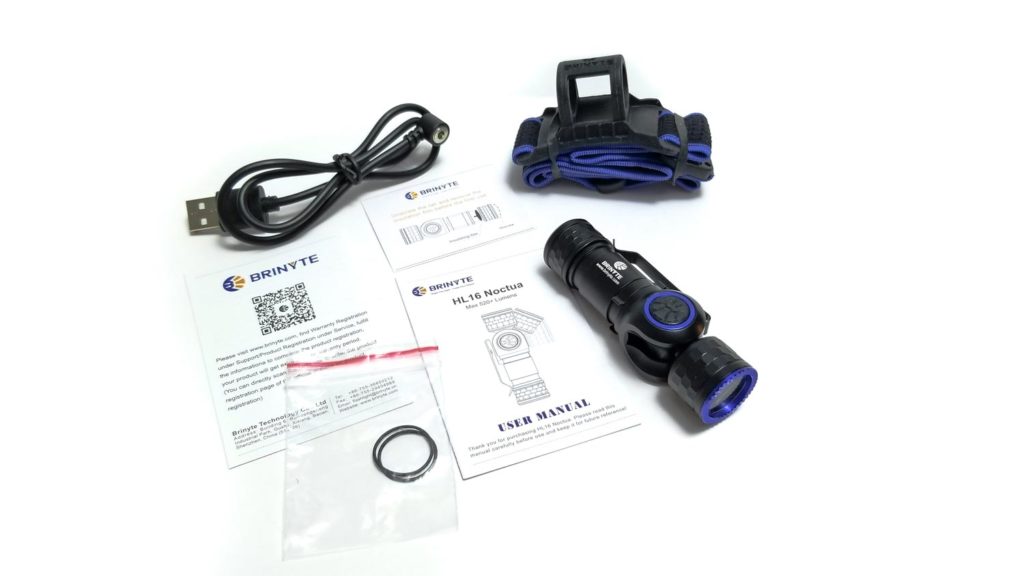
Flashlight in use
The HL16 is a small light and easy to handle. It’s not ultra lightweight, but the extra mass makes it feel more substantial in the hand. There’s an absence of knurling on the body, (the tailcap and head have some unique texturing for gripping), but it doesn’t hurt overall handling much. You can use it in a pistol-grip style, or traditional over or underhand positions. Of course, the HL16’s main attraction is the head, namely its ability to swivel from 0 to 90 degrees. To be honest, I was really skeptical at first about this, but I will say that I am impressed with the execution. Nicron is the only other brand I know of that has attempted this with any success in their B74 and B70 lights. There are spring-loaded detents to help hold the head in place through the rotation at 5 set positions (about 20 degrees apart). Further enhancing the usefulness is a decently-strong magnetic tailcap. Personally I don’t like magnetic tailcaps on EDC lights since everything metal riding in your pocket sticks to it, but as a work light it’s very useful. The magnet is easily able to hold the HL16 at any angle, even when affixed to a round surface (pipe or tube). Nice!
For headlamp duty, the HL16 can be inserted into the soft rubber mount attached to the headband. It’s a bit tricky and requires some force, but once you get it in, it’s pretty secure and allows for 180 degrees of rotation up or down. You can mount it so the head is on the right or left side, so that’s nice also. The headband is adjustable and although only about 1 inch wide, it seems durable and sturdy. The Brinyte logo on the side is reflective for visibility at night. You also get a removable pocket clip that affixes to a groove in the upper half of the tube so you can clip it to your pocket for EDC carry, or clip it to a sleeve, cap bill, shirt pocket, collar, belt, or backpack. The clip is easy to remove and install, but the tip butts against the tailcap and creates a bit of a snag when clipping to my pocket or the bill of a cap. I couldn’t reverse the clip because it interfered with the rotation of the head. The HL16 doesn’t include a lanyard, but if you have one, you can attach it to the pocket clip. The electronic switch is positioned on the side of the head pivot opposite the charging port. It’s accented by a nice blue trim ring, and has a soft, grippy rubber cover with the Brinyte logo on it. I give points here for making a human-hand sized switch button that even my sausage fingers can manipulate. The switch action is nice and clicky with good feel and feedback. Although it’s not backlit, finding it by feel was very easy. Tail standing is also not a problem, and it won’t roll off an inclined surface either.

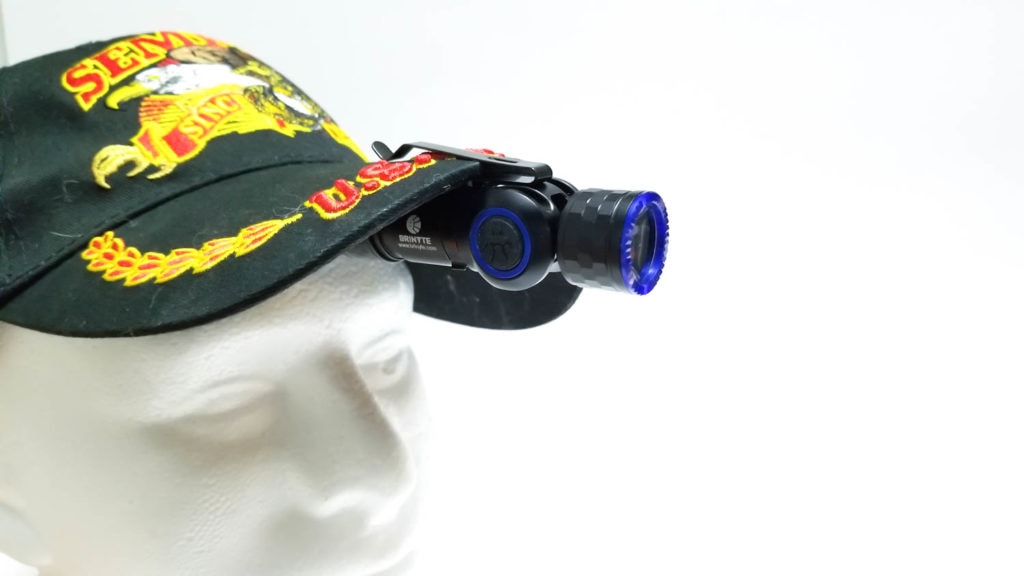
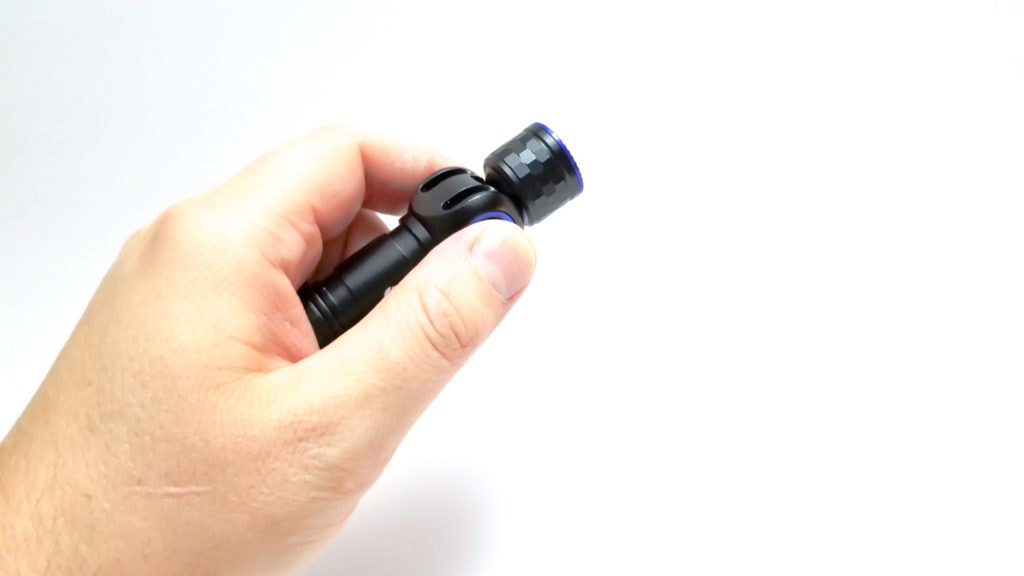
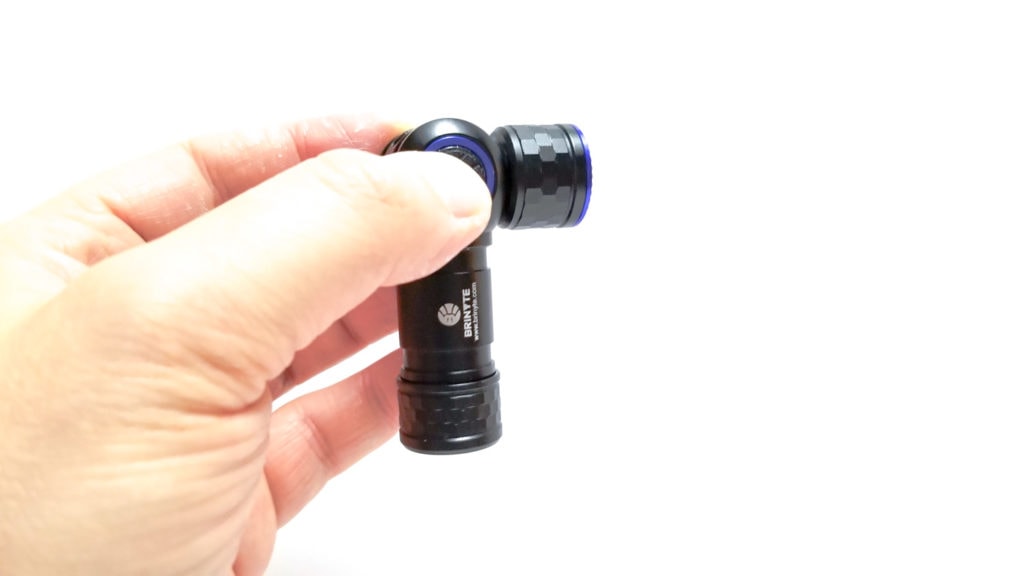
Build Quality, and Warranty
Okay, let’s address the elephant in the room. The HL16 is set to retail (when it goes on sale) for $69.98 US. You might be thinking, “Woah, $70 for this?” Yah, I agree that’s a lot (you can buy 3 Convoy S2+’s for that), but Brinyte is considered an upper-level brand marketed towards the same folks who would buy an Olight, Fenix, Acebeam, or Nitecore. Now, life has taught me that you don’t always get what you pay for, but to justify the price somewhat, the Noctua features magnetic charging and more moving parts than an average flashlight, plus you get a great warranty.
The build quality seems reasonable. The design is quite a bit more complicated than a straight tube light, and I didn’t see any issues with the machining, no tool marks, sharp edges, or defects, and the parts fit together fine. However, the LED was slightly misaligned with the TIR optic. Oops! The head tilting mechanism was pretty solid with only minimal side to side play, and the spring detents did a good job keeping the head in position. The light is constructed from 6061 aluminum and anodized in a semi-gloss type III HA finish. It’s nicely done, but I question the long-term durability since removing the pocket clip a few times did result in some damage to the anodizing. The finish is more glossy than matte, and didn’t contribute much to ‘grippiness,’ On the plus side, this smoothness helps with inserting the light into the headband mount. The battery tube is sealed with a single thin o-ring at the tailcap, and apparently this is good enough for IP66 ingress protection. I don’t know if owls like to swim, but if they do, it should be fine for temporary immersion. The threads are rectangular, super-smooth, and very nicely cut with good lubrication out of the box. The tail cap features a thin gold-plated spring that’s pressed-in for good current flow and durability. There’s no spring on the driver’s positive contact, just a button.
Brinyte’s warranty is generous and about what you get from the other upper-crust brands: 30 day no hassle free replacement, 2-years of free repairs and parts (consumables excluded, o-rings, etc, and buyer pays shipping), with lifetime warranty support (you pay for parts needed for repairs and shipping).
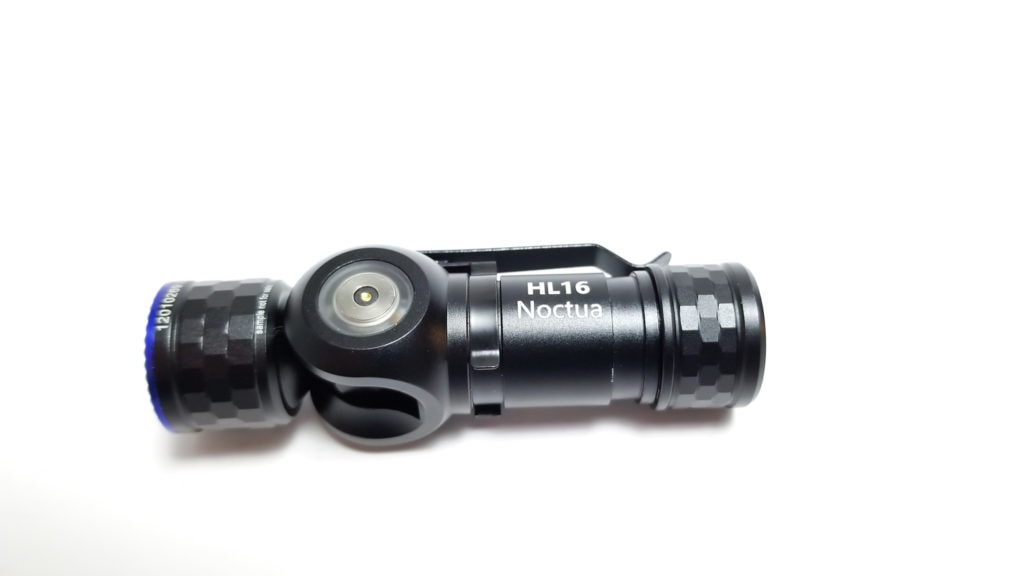
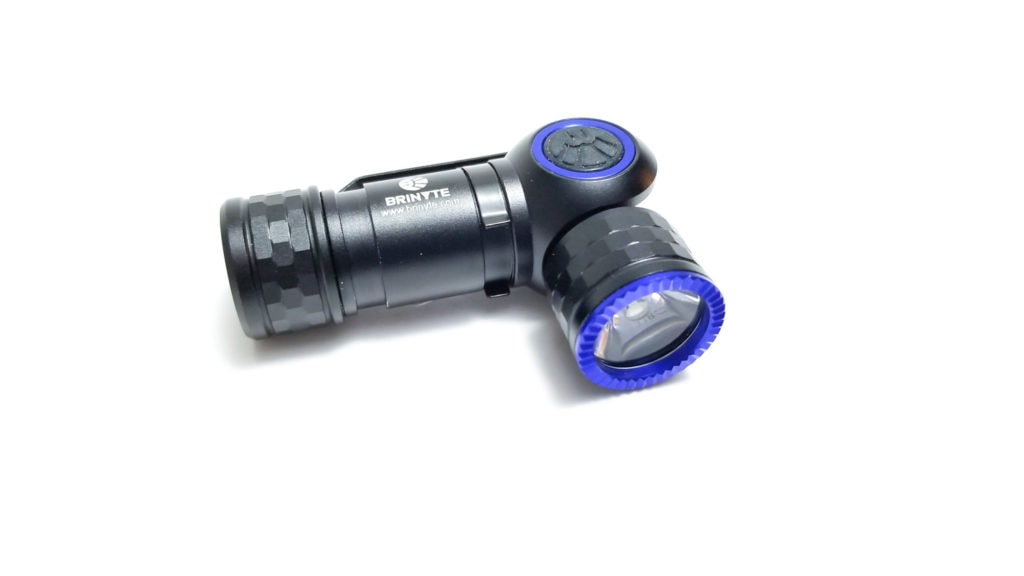
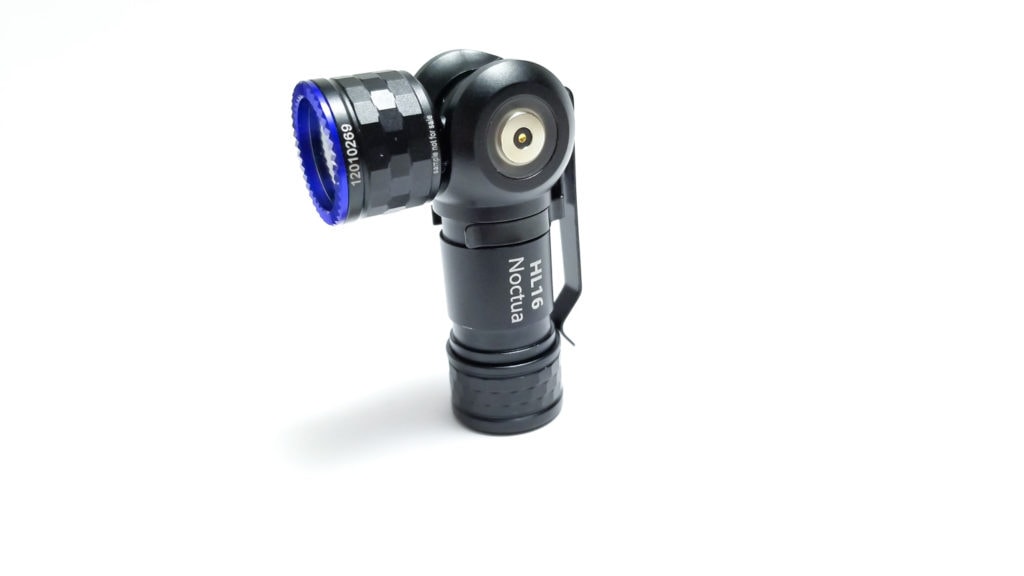
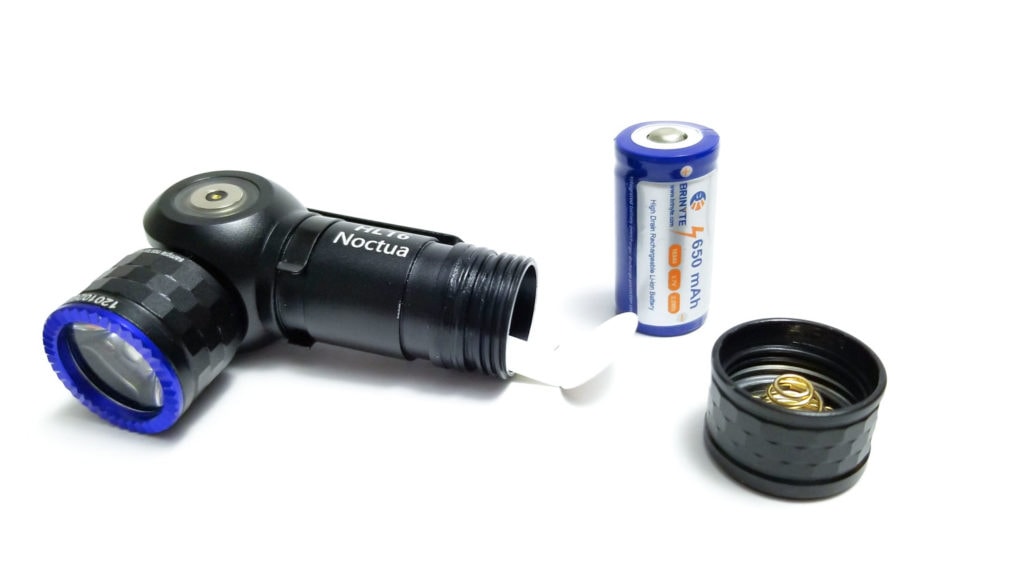
LED, Lens, Bezel, and Reflector
Brinyte only goes so far as to say the LED is a “Cree” and nothing else. However, keen-eyed readers will immediately recognize the LED as Cree’s XP-G3. The tint is not listed, but it’s definitely cool white, and the Opple Lightmaster Pro confirms it at 6500K and 70 CRI. Although it’s not known for pristine beam quality, it is good for high output and has good efficiency with a low vF. The Noctua uses a custom TIR optical lens that should help with the beam quality somewhat. It’s an interesting design, with an open center section that exposes the LED die. There’s no glass lens protecting it, which is a bummer on a light this expensive, but it is set back about 2 mm under the bezel to provide some protection. The bezel is nice blue anodized aluminum with fine straight cut crenulations. I really like how it contrasted with the switch bezel. The beam is typical TIR with diffuse spill surrounding a bright hotspot, but you still get the typical blue-to-white-to-pee yellow tint shift we get with Cree’s flip chips. The beam is further muddied due to the misaligned LED (shown in the photo against a white background from about 10 inches), so the hotspot wasn’t perfectly focused and a bit asymmetrical. It’s still very useful with a good amount of spill and distance for up-close work.
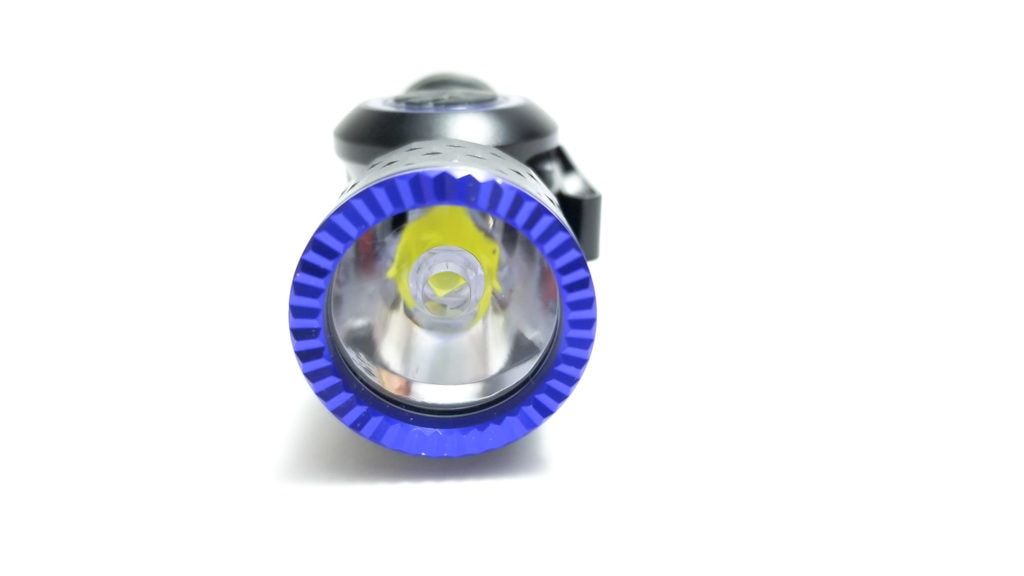
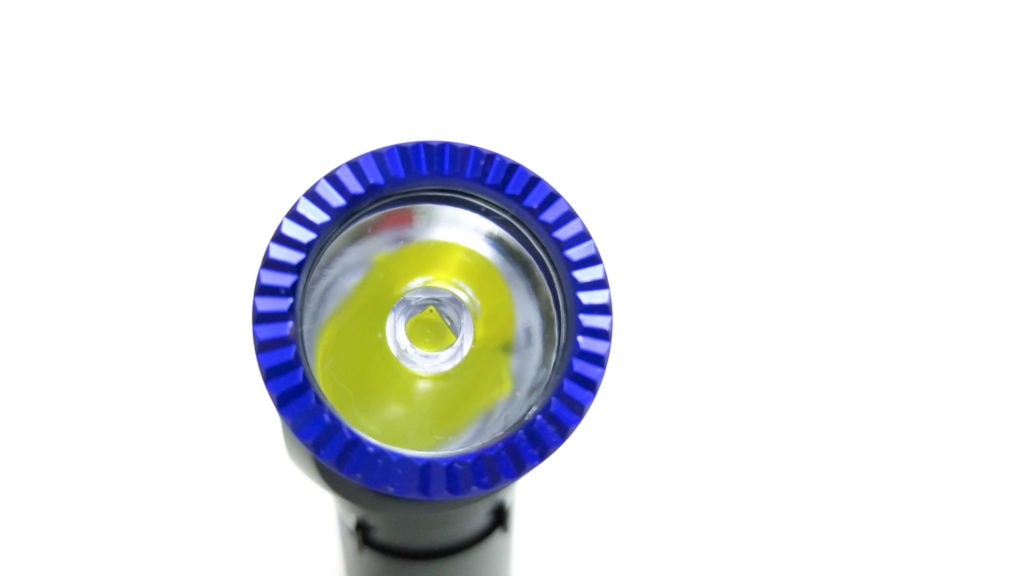
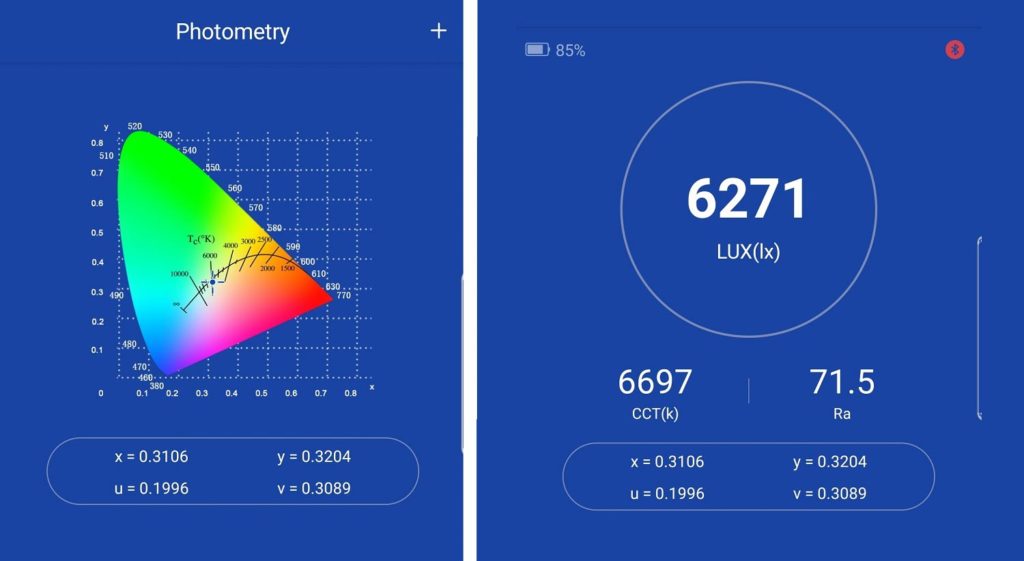
Dimensions and size comparison
- Length: 8.55 cm / 3.36 inches
- Head diameter: 2.25 cm / 0.88 inches
- Body diameter: 2.5 cm / 0.98 inches (at widest part)
Weight:
- Without battery: 48 grams / 1.69 oz.
- With included 16340 battery: 64.8 grams / 2.28 oz.
Flashlight comparison
I compared the HL16 to some other small EDC-type flashlights.
Group 1 left to right: Sofirn SP10S, Lumintop FWAA, Brinyte HL16, Skilhunt E2A, Solarstorm SC01.
Group 2 left to right: FireFlies PL42 Mule, Brinyte HL16, FireFlies PL47G2 2021 edition.
Group 3 top to bottom: Fenix E-Lite, Brinyte HL16, Fenix E09R. Only the 7 year old Solarstorm SC01 is bigger than the Brinyte HL16 with a larger head, but the HL16 is relatively lightweight.
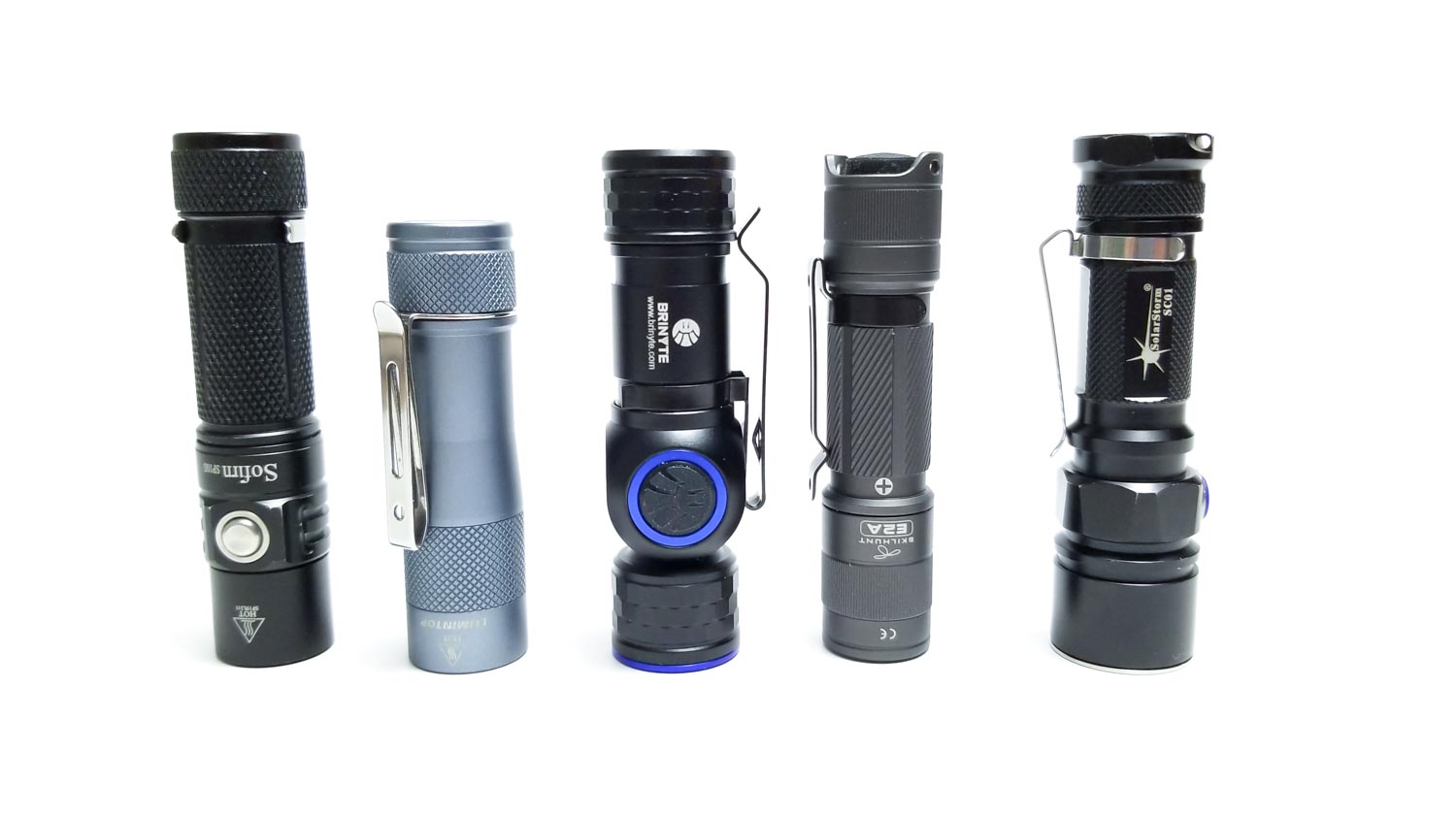
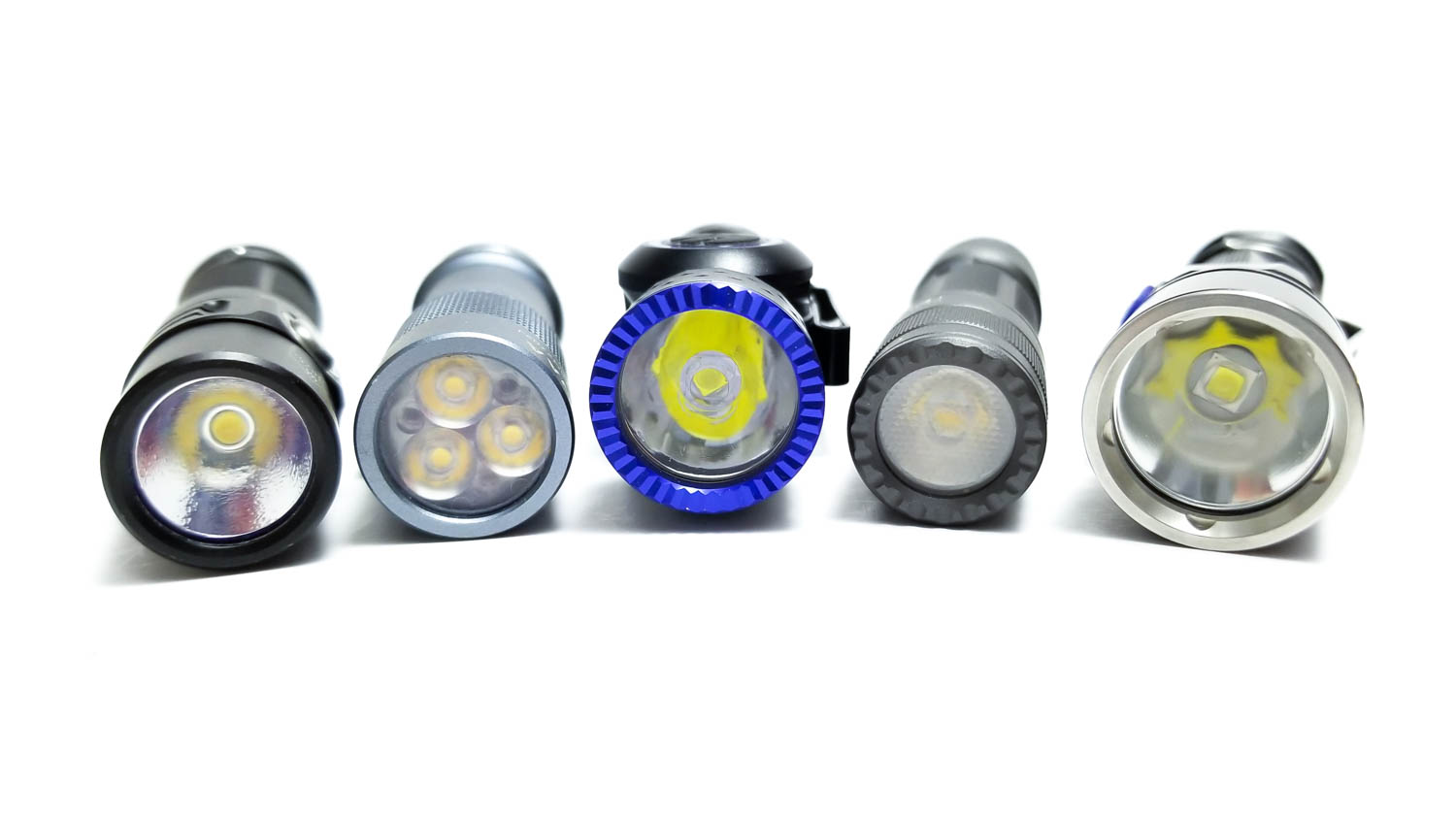
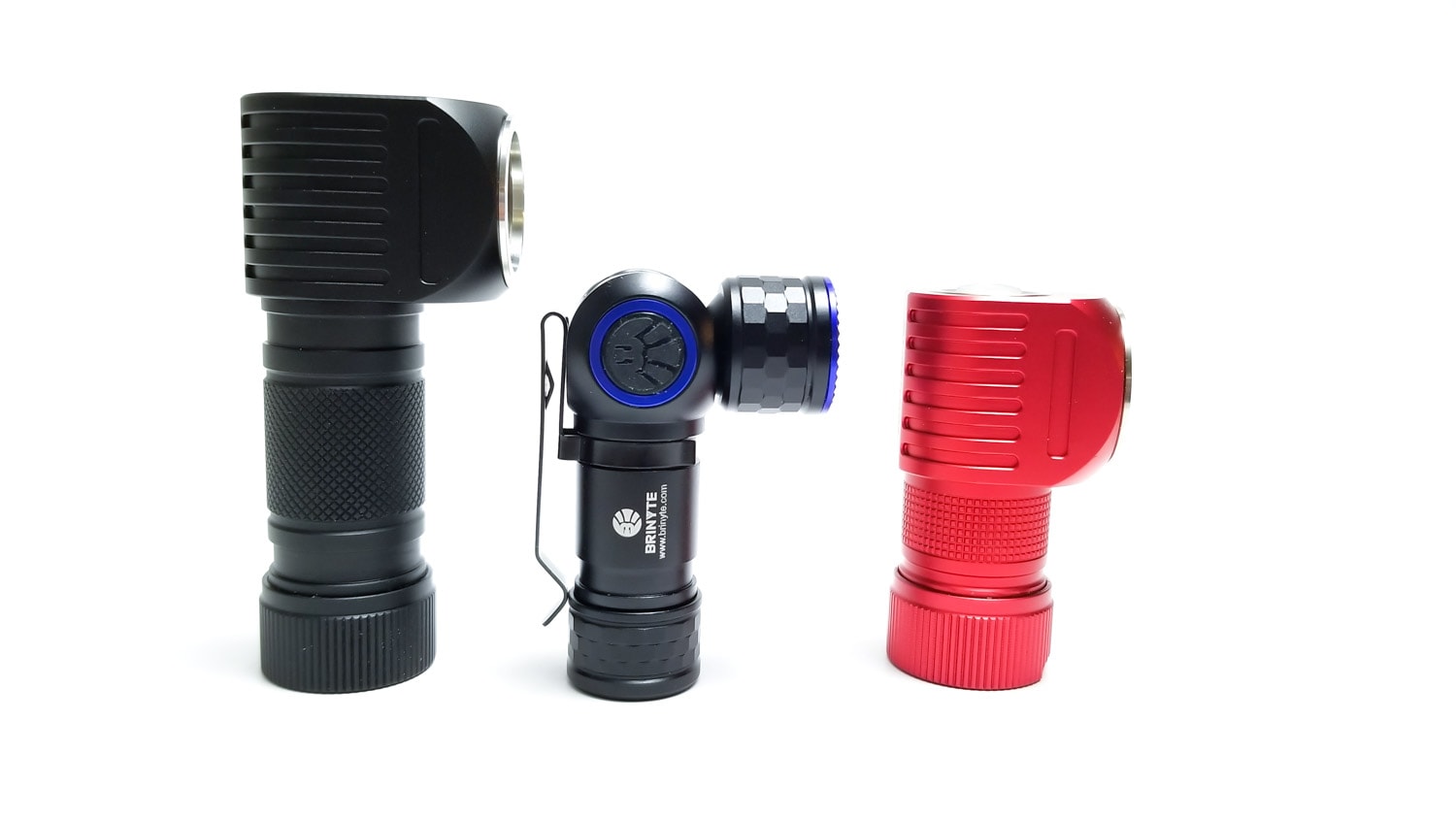
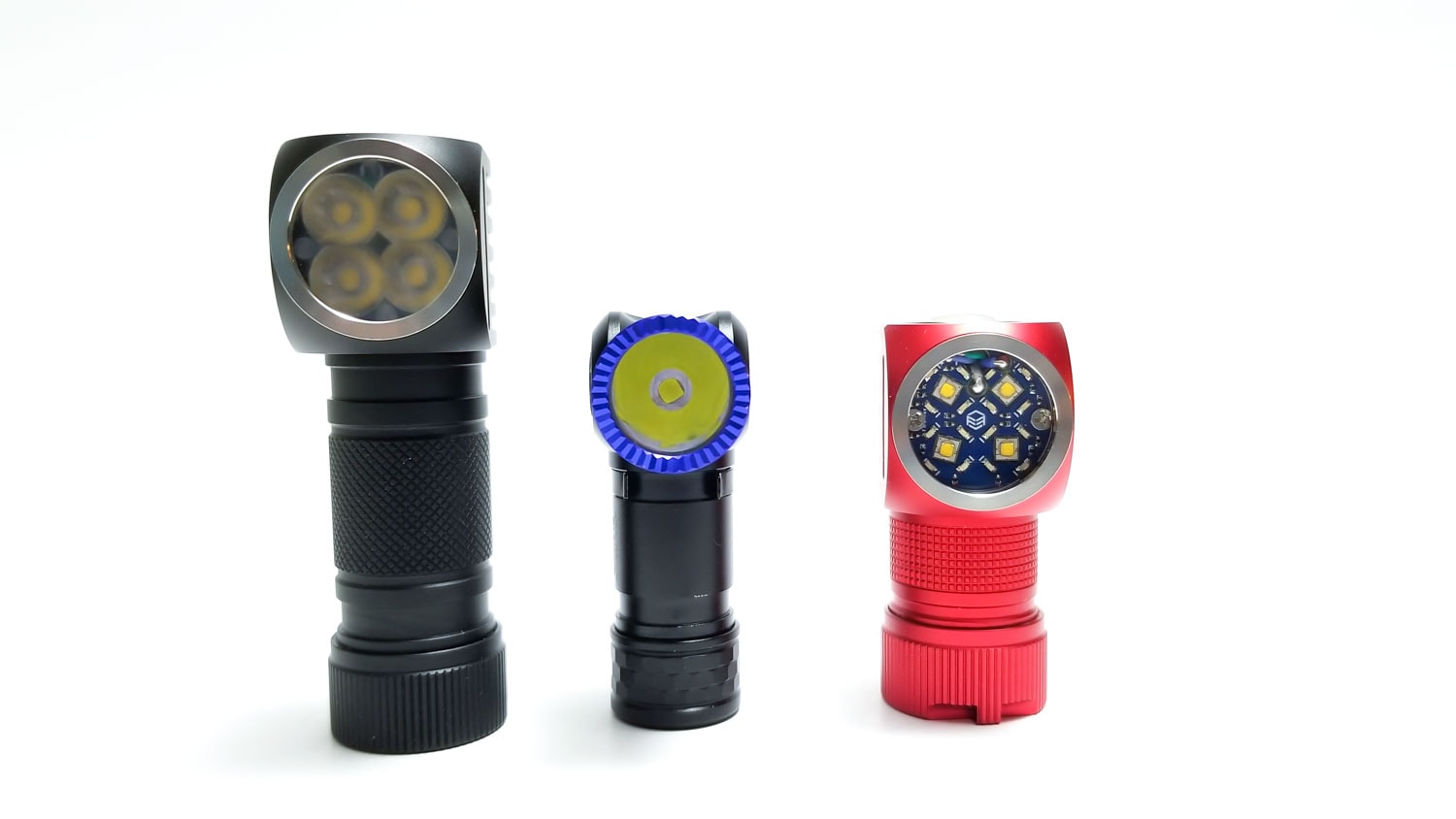
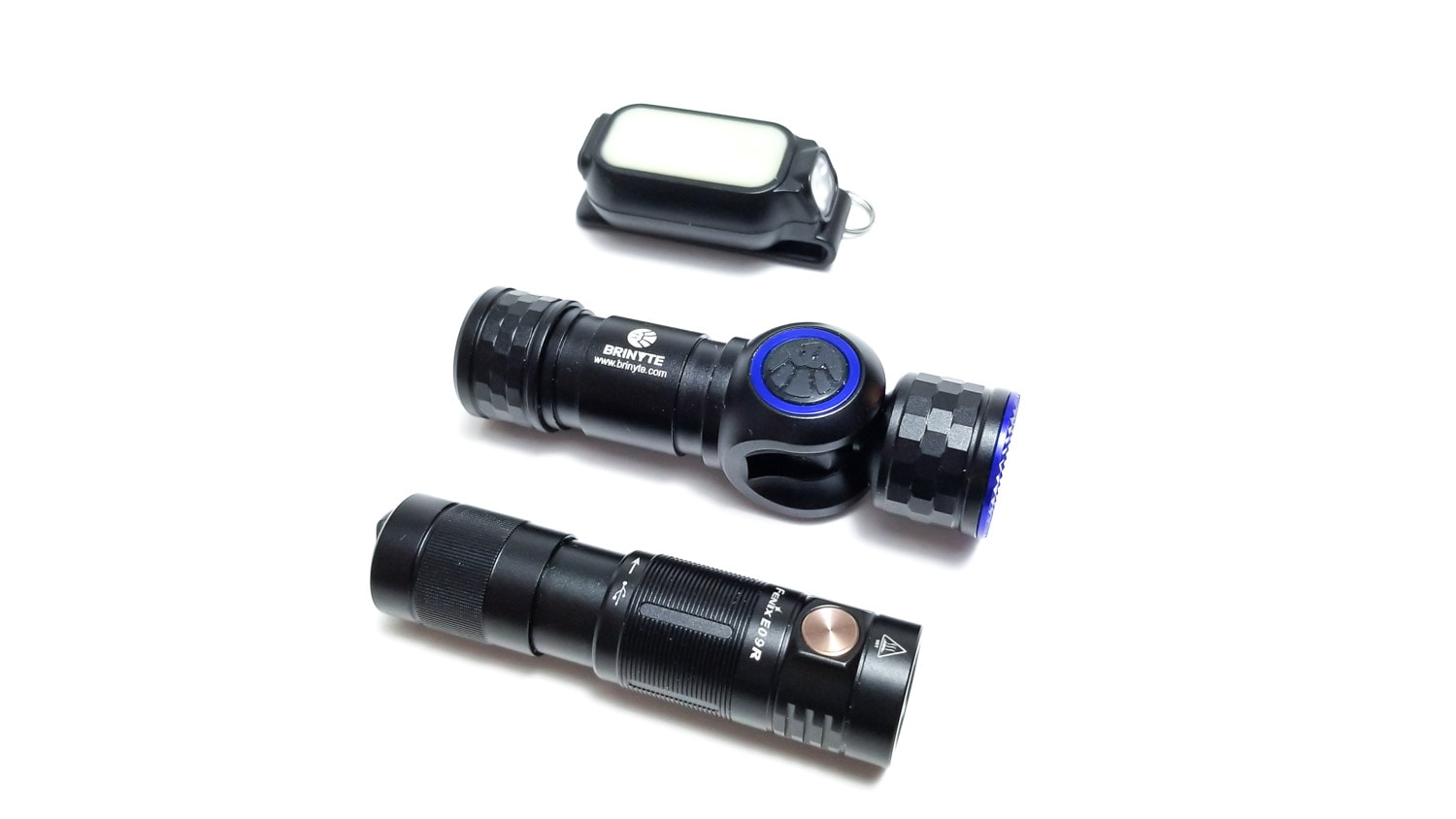
Driver & User Interface:
The HL16 is sealed up tight, so no looking at the driver, but I suspect it’s located in the center section under the magnetic charging pad since it would be too big to put in the head. Since this can take a 3 volt CR123A lithium-ion primary, there has to be a constant current boost driver in there somewhere. This is great for linear output, and (sort of) justifies the price premium.
The user interface is really simple with 4 regular modes plus a single strobe. It’s press and hold for on/off with a single click to change modes. No fancy sword UI’s here, but this is about perfect for a mass-marketed EDC light of this type. It’s not meant to be an enthusiast light and isn’t marketed as one.
Available modes: Moonlight, Low, Medium, High, double-click for strobe.
From OFF:
- Press and Hold: Turns on
- Single click: N/A
- Double click: Strobe
- Triple click: N/A
From ON:
- Press and Hold: Turns off
- Single click: Changes to next mode
- Double click: Strobe
- Triple click: N/A
Mode memory:
- Yes
Shortcuts:
- Double-click in any mode activates strobe
Low voltage warning:
- Yes
Strobe/blinkies
- Single strobe, about 2 Hz
Lock-out mode:
- Nope. Manual lockout by unscrewing the tailcap 1/5th turn
PWM
- Yes on Moon, Low, and Medium, but fast PWM not visible to the naked eye.
Additional info on the UI:
Ok, so I’ve never been a fan of press and hold for on/off, but it’s not the end of the world for a consumer-grade light like the HL16. However, some other brands use that short press to show battery state, which is nice, but not present here. That said, the UI is pretty intuitive with mode memory and instant access to strobe in any state. To exit strobe, you can either single click to get back to the last mode, or press and hold to turn off. The modes are really evenly spaced also. I don’t get PWM on a constant-current driver, but oh well. I was expecting no PWM.
Batteries & Charging
The Brinyte HL16 is designed around the 16340 lithium-ion cell, but a CR123A lithium primary will also work. That’s a good thing since those batteries are readily available at most stores. Brinyte bundles the H16 with their high discharge 650 mAh 2.2 Wh cell with protection PCB (overdischarge, overcharge, temperature, reverse polarity). Like the Oathkeepers, you also get magnetic charging. The kit includes a charging cable with a USB A on one end and the proprietary charging socket on the other arranged at a right angle. Note, if you own a PT18, PT28 or other Brinyte lights, this cable may not be compatible since it’s a slightly different design. This is bad if you lose the cable and don’t have a backup or a li-ion charger.
The charging socket consists of a magnetic pad with a central gold plated contact that interfaces with a gold-plated pogo pin on the charging cable. It’s surrounded by an opaque ring with indicator LEDs underneath for charge status (red for charging, green for charged) and battery state. The indicator also shows battery state when the light is turned on: Green for 40-100%, solid red for 5-40%, and blinking red for 5% or less. Brinyte says a flat battery is charged in 90 minutes. Using the onboard charging, my USB tester showed 540 mA, so I believe that claim. I tried charging the included cell in my Zanflare C4 charger, and it worked fine.
I did find an annoying quirk: When testing the charge current, I noticed the charging indicator would turn green with the current still hovering around 380-360 mA. I took the battery out and it read only 4.0 volts. Hmmmm. I left the charger connected for a while longer (around 50 minutes) until the charge current read 0 milliamps and measured the voltage at 4.16 volts. I originally thought this was a glitch, but Brinyte assured me it isn’t. They figure most consumers won’t disconnect the charger when the light turns green (when the cell hits 3.9 to 4 volts) so they programmed in reduced charge current until the charging terminates at 4.18 volts. They say this ensures long service life for the battery. That’s not a bad thing, but the issue is you won’t get the full capacity if you disconnect the charging when it says it’s “finished.” Assuming the full 650 mA is obtainable, at 4 volts, that’s 85% of the capacity or 552 mA (in reality it will probably be less). Normally, I wouldn’t complain much about this, but in that tiny battery, every electron counts.
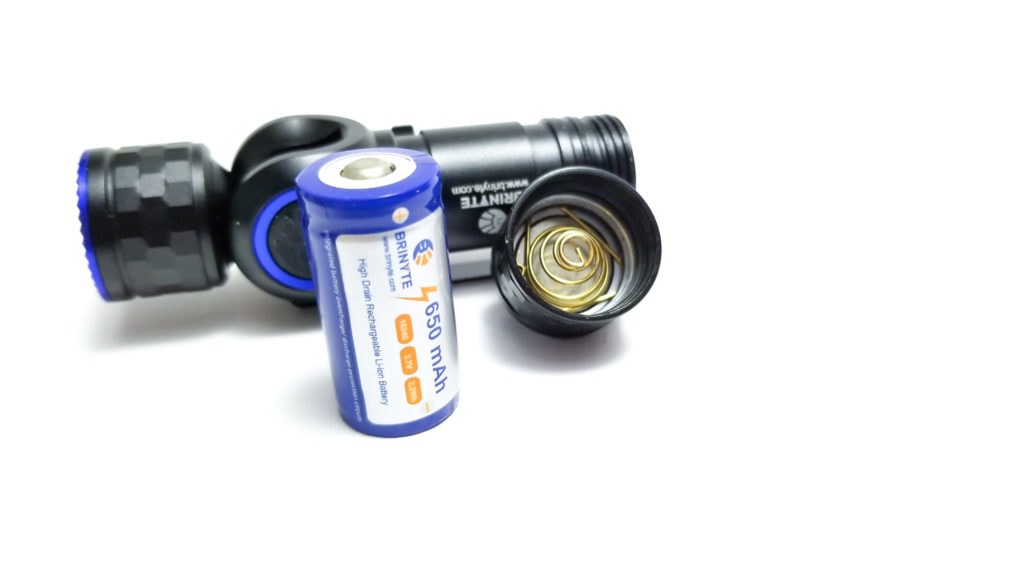
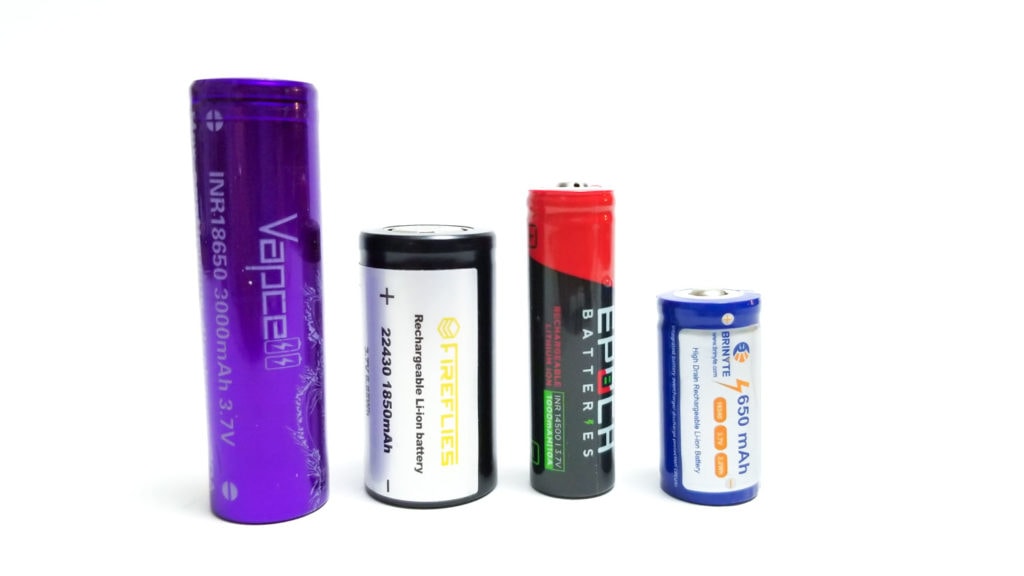
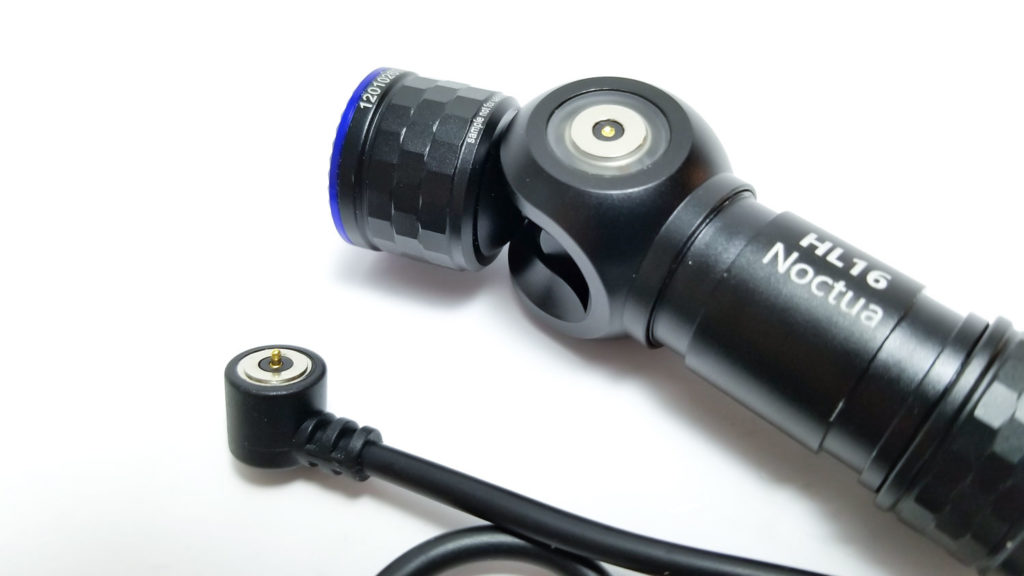
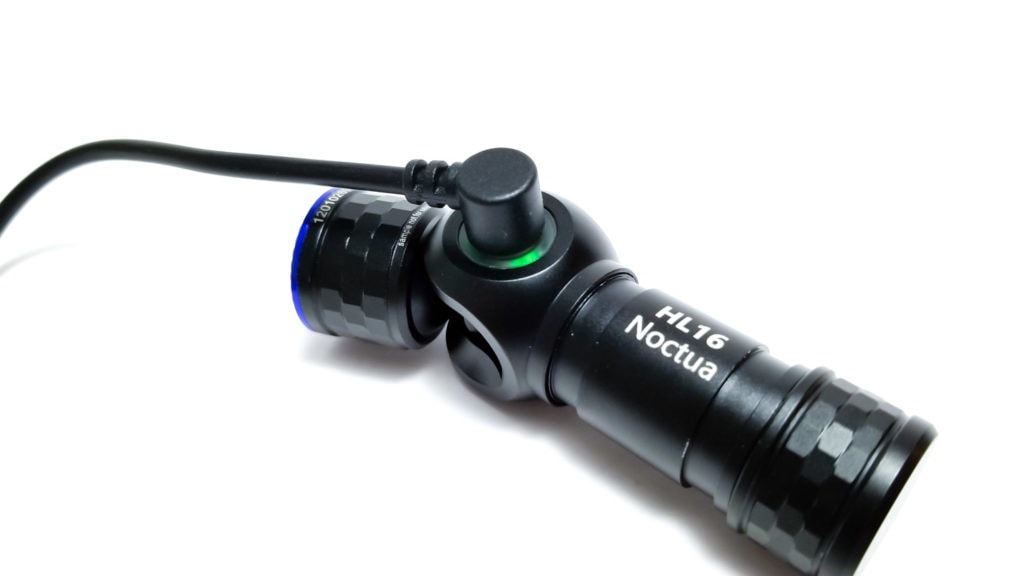
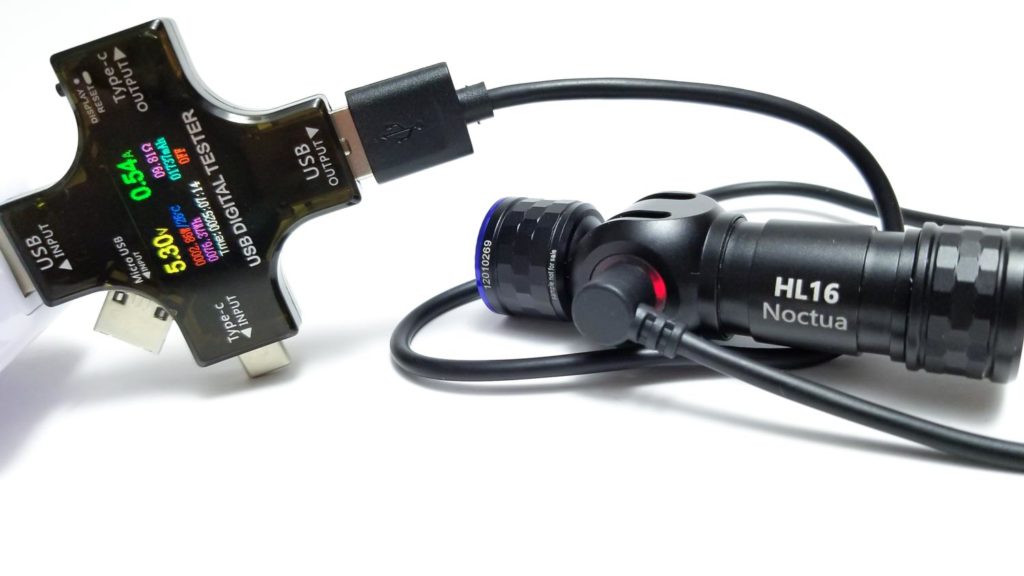
Performance
Lumen measurements:
I measured Lumens using my 30 cm integrating sphere tube with a Digi-Sense 20250-00 data logging lux meter. It’s calibrated with several lights of known output. Tests were conducted using a fully charged included 16340 cell. Amps were measured using my Radio Shack TRMS multimeter with short 16 gauge wires inserted directly in the meter.
| Mode | Amps at start | Specs | start | 30 sec | 10 minutes |
|---|---|---|---|---|---|
| Moonlight | 9 mA | 5 | 2.92 | 2.92 | – |
| Low | 126 mA | 60 | 57 | 56 | 56 |
| Medium | 479 mA | 200 | 204 | 199 | 189 |
| High | 1.28 A | 520 | 496 | 453 lm | 256 |
Parasitic drain:
- 0.2 mA
Runtime graph
Runtime tests were conducted using the 30 cm integrating sphere with the Digi-Sense 20250-00 data logging lux meter calibrated using several lights of known output. I used the fully charged Brinyte 16340 battery for each test and tested Low, Medium, and High modes.
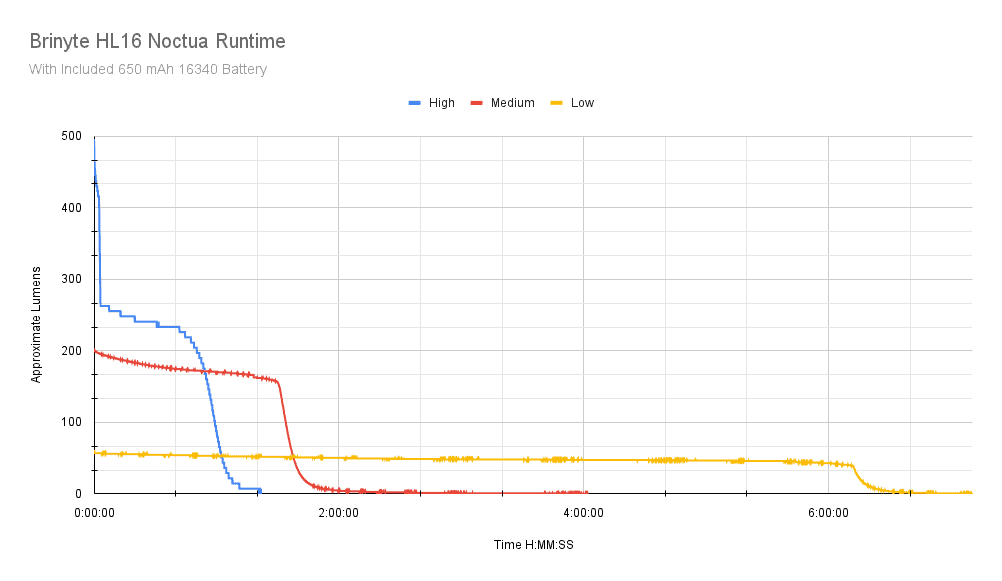
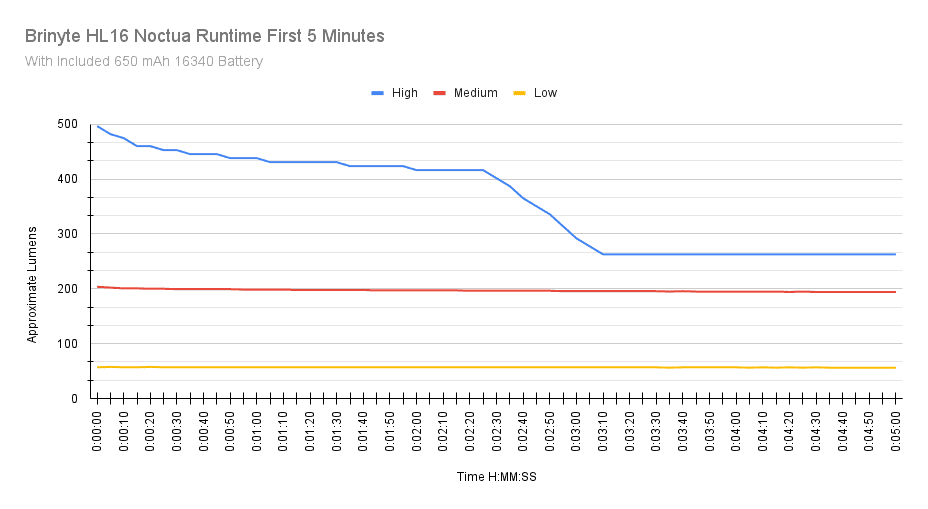
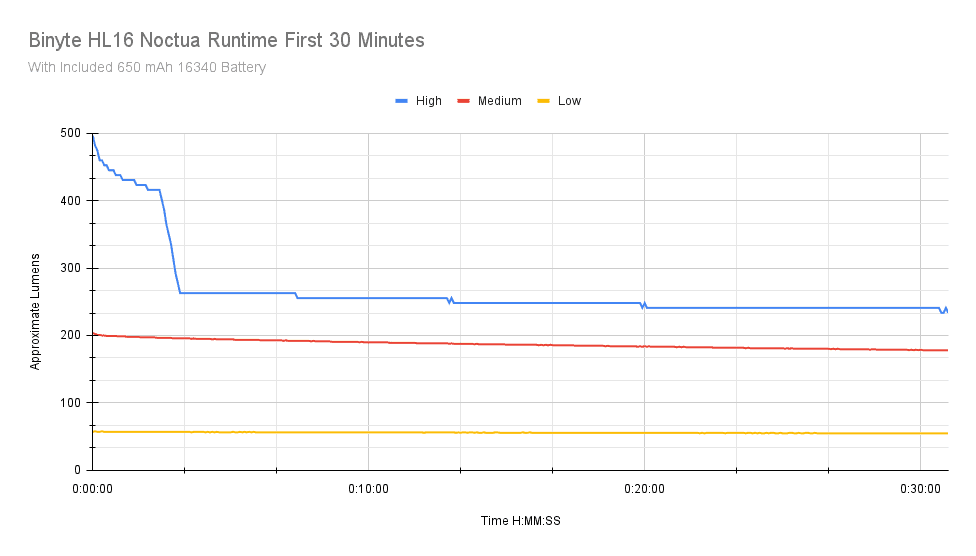
High started close to 500 Lumens, and didn’t hold it very long, but did better than I expected given the lack of heat sinking. The light didn’t heat up that much, only getting up to 45 C on high measured at 5 minutes in. The heat was mostly isolated to the head, not the body like traditional tube lights. By 35 seconds, the output is below 450 Lumens, and it keeps dropping over the next 2 minutes to under 400 Lumens. 30 seconds later, it’s down to 292, but it holds 260 to 200 Lumens for the next 46 minutes. By the 50 minute mark, the output is down to 197 Lumens, which it holds until another step down 6 minutes later, then another 3 minutes later, but this time the output is under 100 Lumens. LVP kicks in around the 1 hour 11 minute mark, and drops the output very low to under 10 Lumens. After 10 minutes, the output drops off the lux meter scale and I end the test. Total runtime is 1 hour 21 minutes. I barely beat Brinyte’s 65-minute runtime figure.
Medium hit 203 Lumens at start, and was very stable, keeping at or above 190 Lumens for 10 minutes. The light didn’t heat up much, staying under 40 C the entire test. The output characteristics were similar to High, with well regulated output, holding over 100 Lumens until the 1 hour 34 minute mark, when the light started throttling back to under 50 Lumens at 1 hour 38 minutes, and to under 20 Lumens by 1 hour 43 minutes, and under 10 Lumens by 1 hour 48 minutes. The output hovered around 5 Lumens by the 2 hour mark, and LVP kicked (the red light was flashing at the 1 hour 50 minute mark), and the output dropped very low to under 1 Lumen by the 2 hour 58 minute mark. It stayed this way until the light shut off at 4 hours and 2 minutes, totally crushing Brinyte’s figure of 100 minutes (1 hour 40 minutes).
Low was as predictable as it was boring, but still the runtime was impressively long. The test started at 56.4 Lumens, and the output didn’t change much over the duration of the runtime. It held 50 Lumens for 2+ hours, and 40 Lumens for over 6 hours. The output didn’t take a big drop until the 6 hour 20 minute mark when it dipped under 10 Lumens, with the output dipping under 3 Lumens by 7 hours and finally shutting down at 7 hours 10 minutes. Once again, this demolishes Brinyte’s figure of 290 minutes (4 hours, 50 minutes).
What did we learn? The XP-G3 is not being driven very hard, and being an efficient emitter, you can expect long runtimes even out of a 650 mAh cell, which we got. The runtimes were consistent and long with no wild variation in output. I don’t know if the output is influenced by temperature or battery voltage, but overall the output looks fine. It’s also worth mentioning that after the High test, the light was not functional, but I was able to get low output (5-10 Lumens) after the Medium test.
Throw numbers:
Throw was measured at 5 meters indoors using the Uni-t UT383S lux meter. I used the fully charged included 16340 battery for the test. Readings were recorded at 30 seconds. Brinyte doesn’t list candela or distance figures for every mode, just a max of 5000 cd and 140 meters for the High setting.
| Mode | Specs | Candela measured | Meters |
|---|---|---|---|
| Moonlight | ? | N/A too low | N/A |
| Low | ? | 675 cd | 51.96 |
| Medium | ? | 2500 cd | 100 |
| High | 5000 cd | 6550 cd | 161.86 |
The throw is good for a small light, but it isn’t as impressive as some other small lights I have. I think it could be improved upon with a properly aligned optic since I had to hunt for the brightest part of the hotspot at 5 meters. However, I still beat Brinyte’s advertised figure.
Beamshots
I tested the HL16 indoors against some other pocket lights, the Skilhunt E2A (SST20 4000K 95 CRI with TIR), Fenix E09R (SST20 6500K with TIR), Sofirn SP10S (Samsung LH351D 5000K 90 CRI, OP reflector). I also tried it out doing some work on my car.
The end of the first hallway is 7 meters away. The Longer hallway is 12 meters. The map on the wall is 4 meters away. The HL16 on High easily lights up the whole office. You can see the difference between the two cool white TIR lights (SST20 for the Fenix vs. the XP-G3 in the HL16) and the amazing neutral white high CRILH351D in the Sofirn (still one of my favorite beams in a pocket light!). The tint shift is noticeable on the white wall, but in the field, not so much, and it’s very versatile!
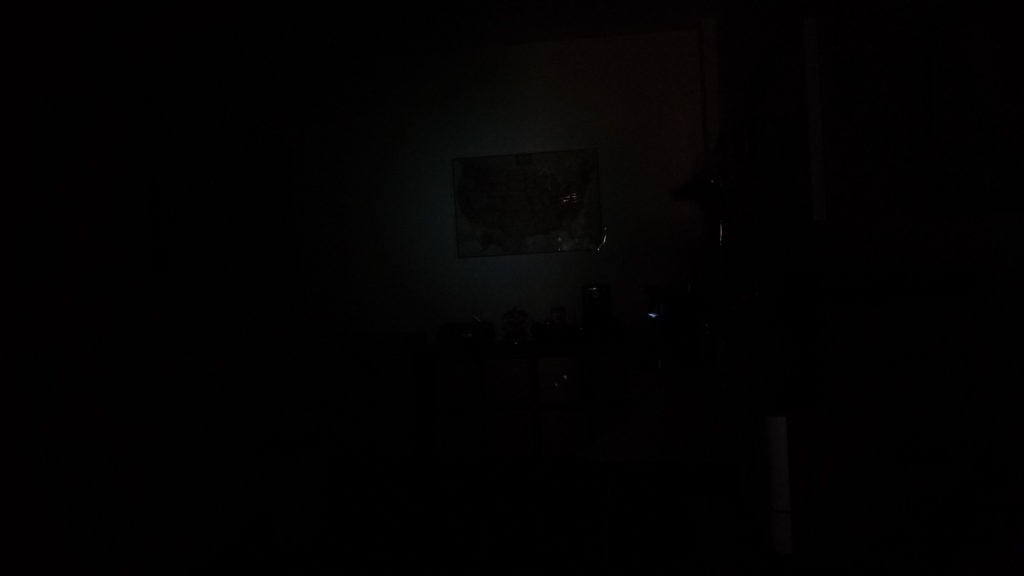
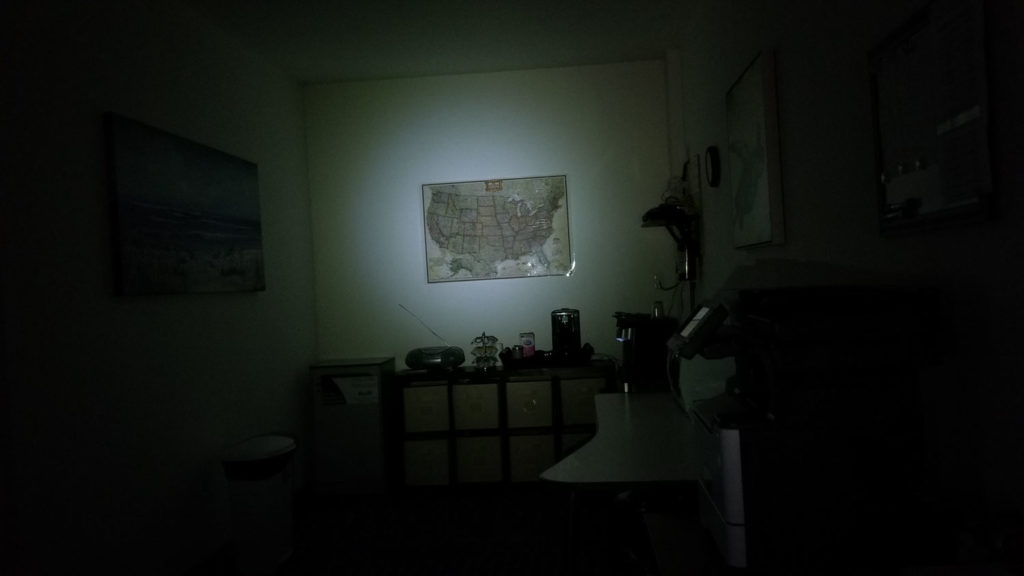
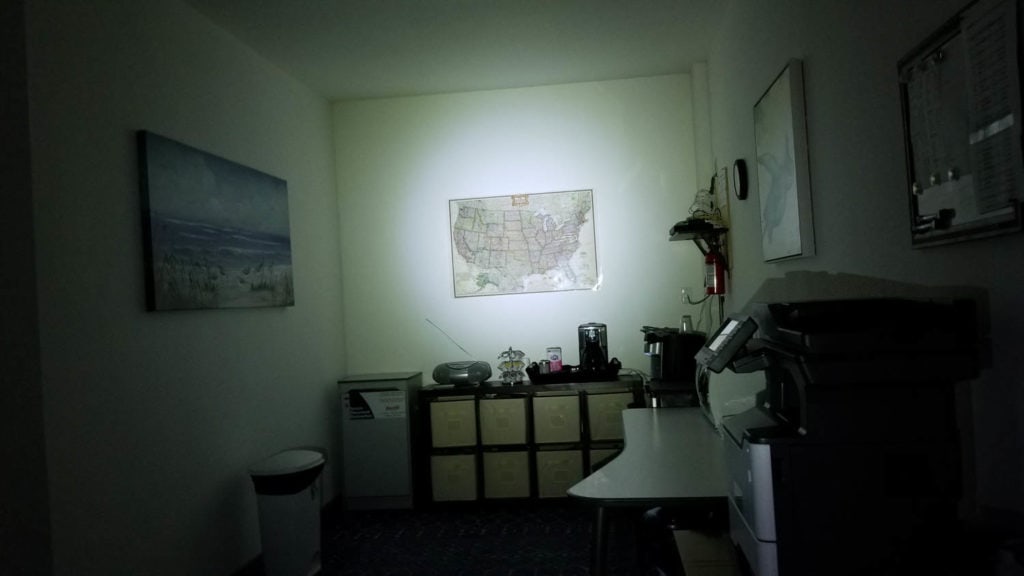
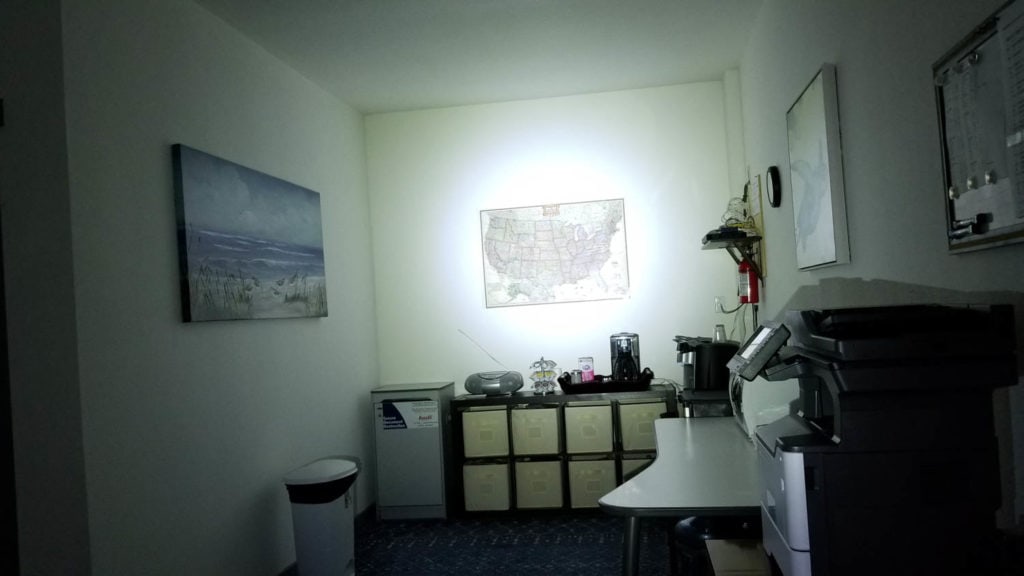
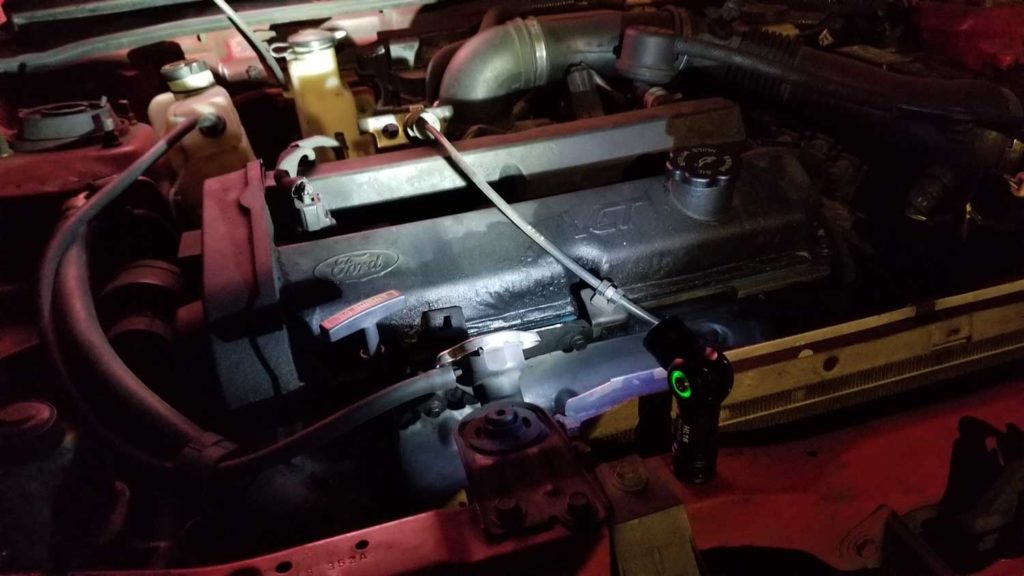
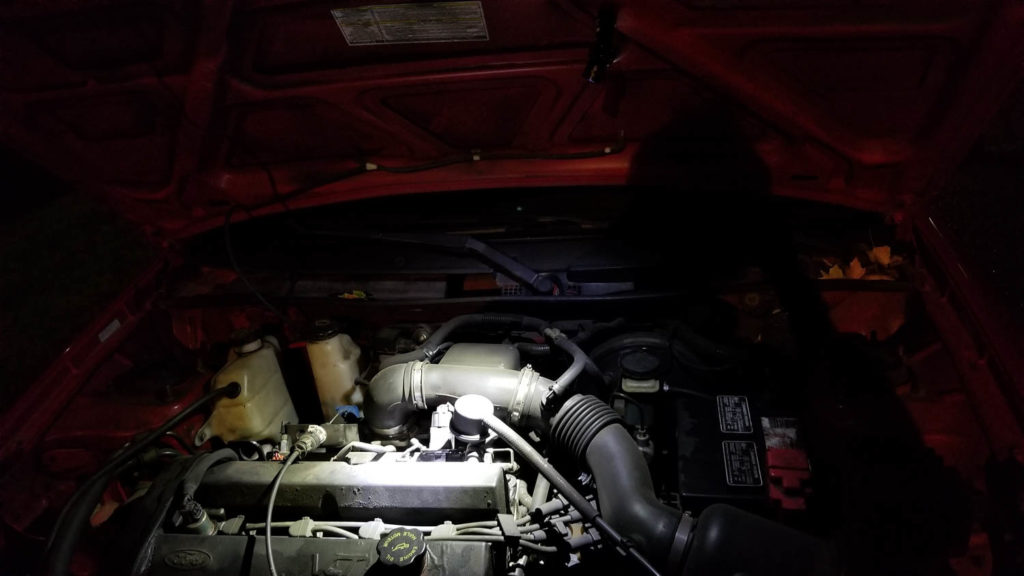
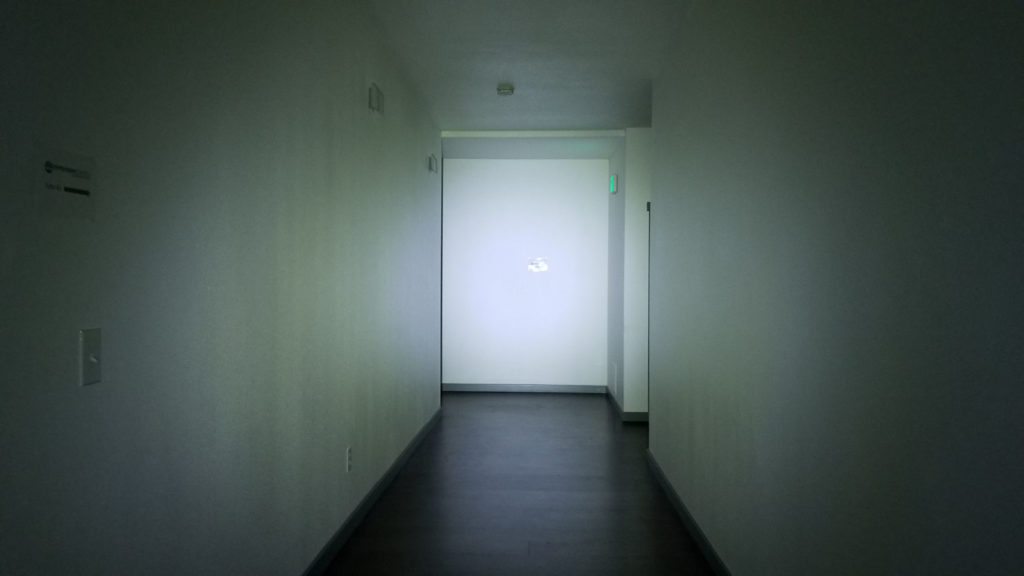
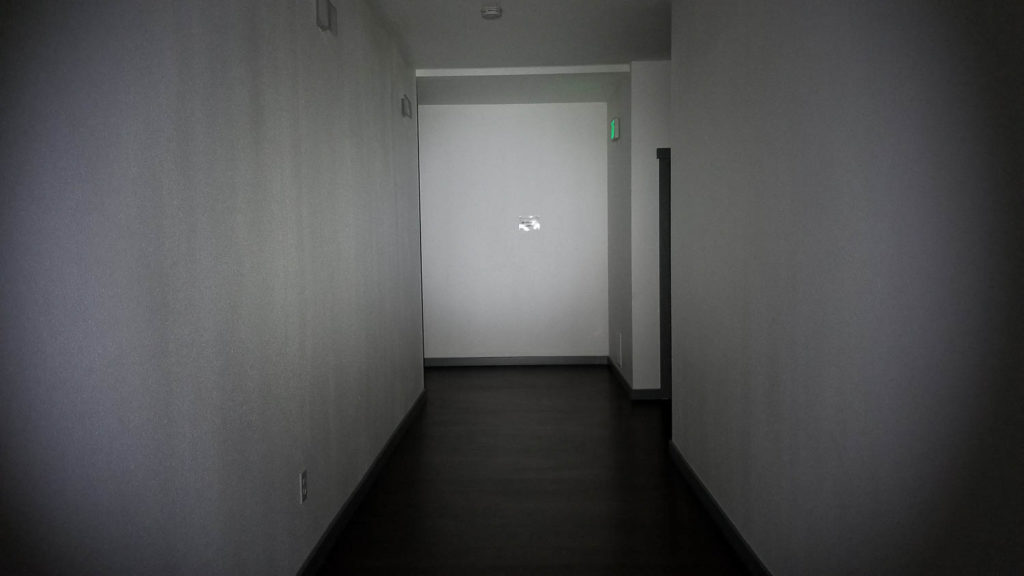
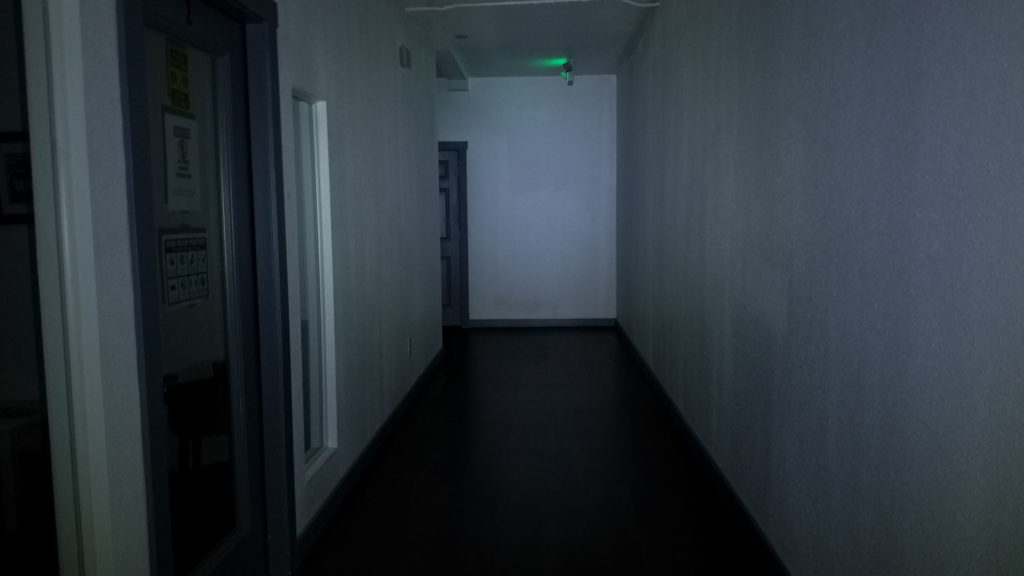
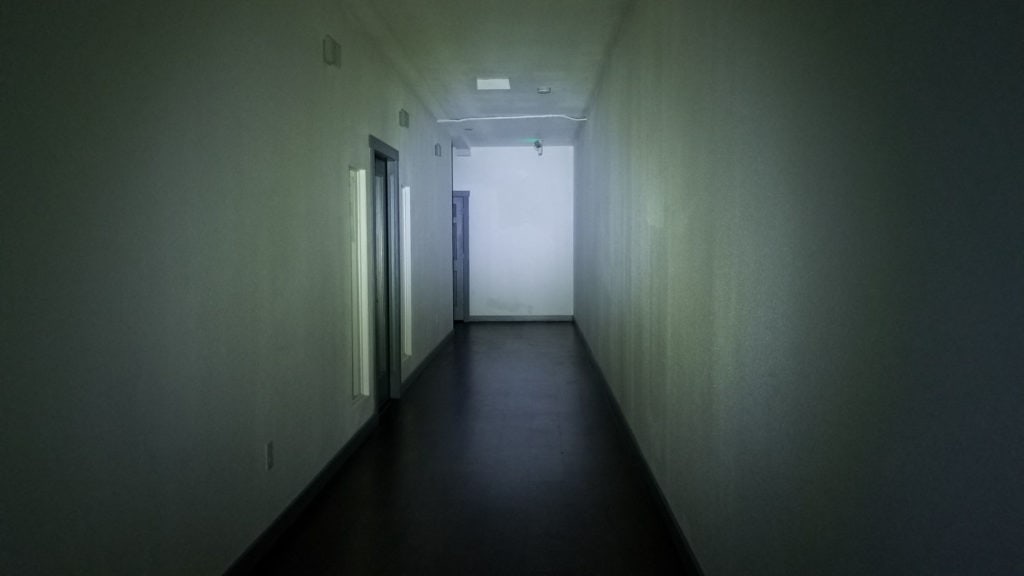
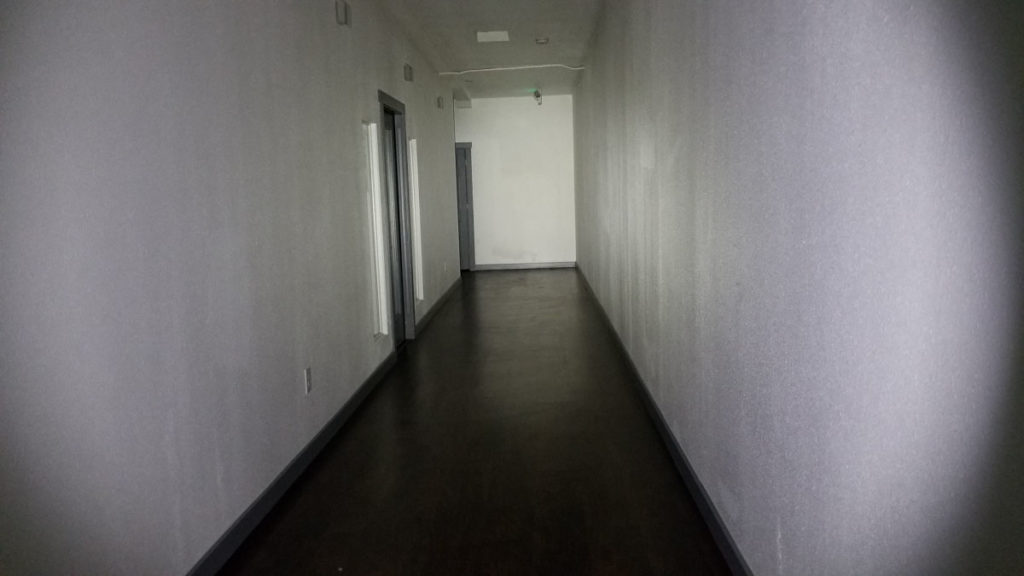
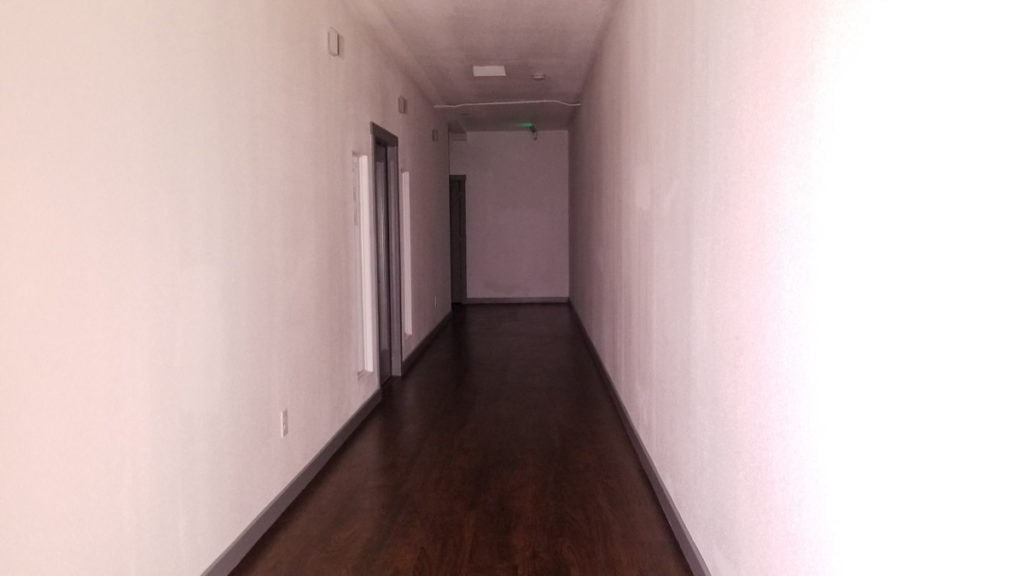
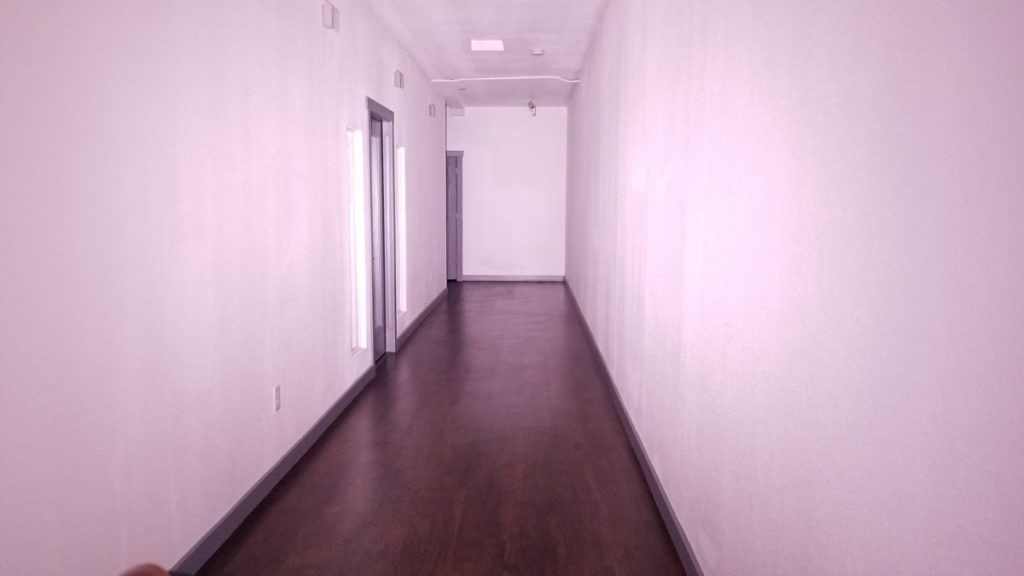
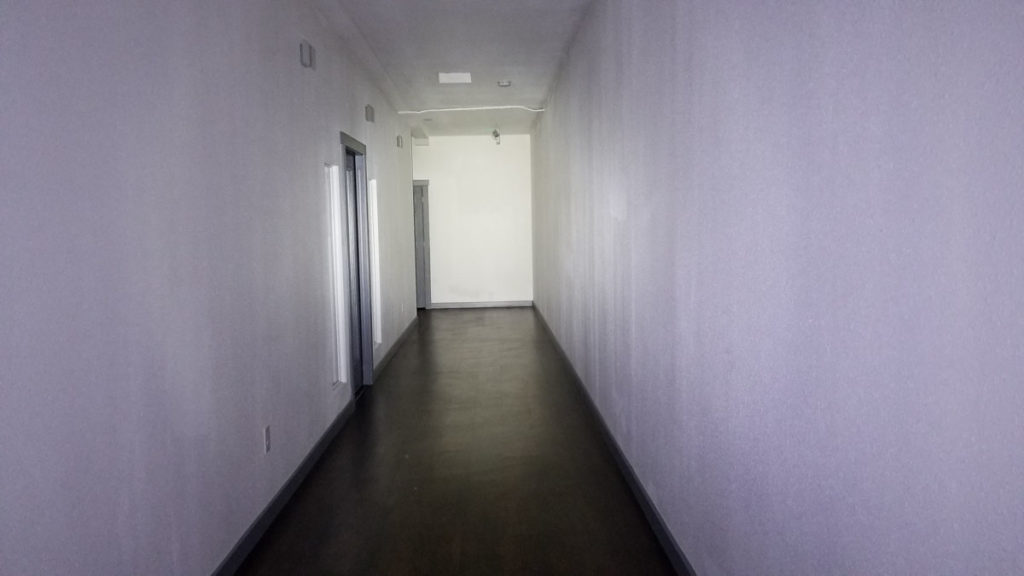
Disclaimer: This flashlight was sent to me for review at no cost by Brinyte. I have not been paid to review, nor have I been holding back on problems or defects.
Final Verdict
Pros
- Innovative design with swiveling head
- Boost driver
- Simple UI
- Magnetic tailcap and charging
- Consistent, long runtimes
- Can use CR123A cells
Cons
- Proprietary charging cable
- Charge termination indicator shows charged at 85% capacity
- Misaligned optic
- Tint shift even with the TIR
- A bit pricey for what it is
Explanation on star ratings:
1: Avoid: my phone flashlight would be a better choice – 2: Poor: significant defect or issues, much better options available at the same price – 3: Average: some defects or issues – 4: Good: recommended (minor issues) – 5: Great: highly recommended

3.5 stars: ★★★⋆
After spending some time reading Owen and Gabriel’s reviews of the Oathkeeper and Artemis lights, it’s not difficult to deduce that Brinyte is a company that marches to the beat of a different drummer. Fielding lights with unique design features and cool names, it was only a matter of time before something like the HL16 was birthed. Adjustable head flashlights aren’t a new thing, but the Noctua improves upon the current designs from Nicron and others. Adding a headband, magnetic tailcap, and magnetic charging, with the option to use lithium primaries ups the versatility factor quite a lot. It’s a well-made item with nice features, solid build quality, great warranty, and I like that it has a constant current driver.
However, there are some issues. It’s hard to excuse the misaligned optic, lack of a glass lens, and the beam is not the greatest even with the TIR (I think a pebbled or frosted TIR would help a lot). I am not a fan of the charging algorithm, and although it probably won’t matter to most buyers, I can’t ignore the limitations of a proprietary charging cable (you know how it goes…lose it and you will be up a creek without a charging cable).
Lastly, the price: Brinyte is a quality brand, but the HL16 seems too expensive for what it is when there are other capable cheaper options out there. At the end of the day though, there will be folks who will gladly pay extra for the swiveling head, magnetic tailcap, and hybrid flashlight/headlamp features. Overall, this is a great effort from Brinyte, and they get major kudos for delivering a highly useful and versatile EDC/general purpose/headlamp with some quirks. 3.5 stars for the HL16.
Brinyte HL16 for sale
1lumen selects and reviews products personally. We may earn affiliate commissions through our links, which help support our testing.